-
About
- About Listly
- Community & Support
- Howto
- Chrome Extension
- Bookmarklet
- WordPress Plugin
- Listly Premium
- Privacy
- Terms
- DMCA Copyright
- © 2010-2025 Boomy Labs


 Boutiqify
Boutiqify
Listly by Boutiqify
Nintendo has announced the release date for the highly anticipated Super NES Classic Edition gaming console. Set to be released on September 29, 2017, the Super NES Classic will cost only $79.99. The console will come with two controllers and 21 Classic Super NES games. This list features the 21 games that will be included with the purchase on the Super NES Classic beginning 9/29.
Source: http://www.boutiqify.com/blog/video-games/21-nintendo-super-classic-nes-games/
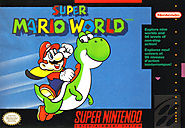
Super Mario World centers on the quest of Mario and Luigi to save Dinosaur Land from Bowser, the series' antagonist. The two brothers must travel across seven worlds to restore order to Dinosaur Land. It built on the gameplay of previous Mario games, introducing new power-ups that augment character abilities, and established conventions that were carried over to future games in the series. The game also marked the first appearance of Yoshi, Mario's dinosaur sidekick.
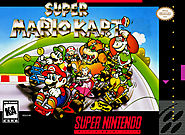
In Super Mario Kart, the player takes control of one of eight Mario series characters, each with differing capabilities. In single player mode players can race against computer-controlled characters in multi-race cups over three difficulty levels. During the races, offensive and speed boosting power-ups can be used to gain an advantage. Alternatively players can race against the clock in a Time Trial mode. In multi-player mode two players can simultaneously take part in the cups or can race against each other one-on-one in Match Race mode. In a third multiplayer mode – Battle Mode – the aim is to defeat the other players by attacking them with power-ups, destroying balloons which surround each kart.
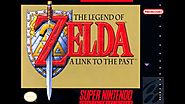
The plot of A Link to the Past focuses on Link as he travels on a journey to save Hyrule, defeat Ganon and rescue maidens related to the Sages. A Link to the Past uses a 3/4 top-down perspective similar to that of the original The Legend of Zelda, dropping the side scrolling elements of Zelda II: The Adventure of Link. The Legend of Zelda: Link to The Past introduced elements to the series that are still commonplace today, such as the concept of an alternate or parallel world, the Master Sword and other new weapons and items.
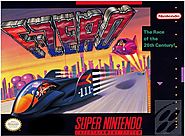
F-Zero delivers the excellent play control you've come to expect in a game from Mr. Miyamoto and his team at Nintendo. You can bank with the R Button and tip down your nose while making jumps. You'll need all the control you can get, too, as you roar through the twists and turns of F-Zero's 15 deviously difficult courses. There are four hover cars to choose from, each with its own strong points and weak points. Most beginners find the durability and handling of the Fire Stingray easiest to use (despite poor acceleration), but veteran players will often choose the more-balanced Blue Falcon.
Strategy plays a big part in this speedfest. In this one-player racing game you will need to find shortcuts, elude hazards and snag power-ups if you want to beat your savvy competition. Keep an eye out for sand, land mines, magnets and other trouble spots, but always be ready to get a boost from a speed or jump plate. You'll earn one Super Turbo per lap, and part of the strategy is knowing when to use it.
When originally released in 1991, F-Zero's graphics were light years ahead of most of the competition. It still impresses mightily, thanks to innovative use of Mode 7 scrolling that immerses you in the adrenalin-pumping action.
Sonically, F-Zero is one of the best SNES titles. Driving techno music and top-notch sound effects, including the hum of your car's turbines unwinding, relentlessly propel the action. The aggressive artificial intelligence of your rivals never allows you to ease up.
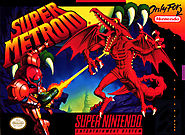
The development staff from previous Metroid games – including Yoshio Sakamoto, Makoto Kano and Gunpei Yokoi – returned to develop Super Metroid over the course of two years, with a year prior to gain approval for the inital idea. The developers wanted to make a true action game, and to set the stage for Samus's reappearance. The gameplay focuses on exploration, with the player searching for power-ups that are used to reach previously inaccessible areas. It features new concepts to the series, such as the inventory screen, an automap, and the ability to fire in all directions.
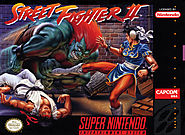
The success of Street Fighter II is credited with starting the fighting-game boom during the 1990s which inspired other game developers to produce their own fighting-game franchises, popularizing the genre, and setting off a renaissance for the arcade game industry in the early 1990s. It was then ported to the Super Nintendo Entertainment System platform, for which it became a long-lasting system-seller. Its success led to a sub-series of updated versions (see below), each offering additional features and characters over previous versions, as well as several home versions.
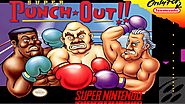
In Super Punch-Out!! the player controls Little Mac, as he fights his way to become the World Video Boxing Association champion. Players, fighting from a "behind the back" perspective, must knockout their opponent in three minutes to win. Players can launch jabs, hooks, and uppercuts against their opponents as well as block, dodge, and duck opponents' attacks. Nintendo Integrated Research and Development, led by Genyo Takeda, Minoru Arakawa and Makoto Wada, developed the game. It also featured voice acting by Charles Martinet.

Following the same setting as Castlevania on the NES, the game takes place in 1691 Transylvania, where the vampire hunter Simon Belmont must defeat the vampire Dracula.
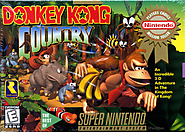
The game is set on "Donkey Kong Island" and centres around Donkey Kong and his nephew Diddy Kong, who must recover their stolen hoard of bananas from King K. Rool and the Kremlings. Development of the game first began shortly after Rare's Tim and Chris Stamper ran experiments with a Silicon Graphics workstation, rendering realistic 3D sprites. Nintendo became interested in Rare's work and soon acquired 49% of the company which culminated in the production of a new title using Alias and SGI technology for the SNES console. The Stamper brothers expressed an interest to create a standalone Donkey Kong game, and assembled a team of 12 to work on the game over an 18-month development cycle.
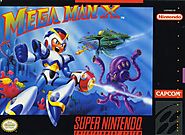
Mega Man X, commonly known as "X", was created by Dr. Thomas Light an unknown number of years after the Mega Man series. X was a new type of robot with the ability to make his own decisions. Recognizing the potential danger of this model, Light sealed X away in a diagnostic capsule for over 30 years of testing. Though what happened to him during these years is not specifically mentioned, it is assumed that Dr. Light died and left his diagnostic experiments unfinished. X's capsule was uncovered by an archaeologist named Dr. Cain almost 100 years after X's creation. Excited by the possibilities X presented, Cain disregarded the warnings Light had logged in the capsule and created a legion of new robots that replicated X's free will; these robots were called "Reploids" ("Repliroids" in Japan).
However, a virus that caused Reploids to turn against humans (later discovered to be originated by Dr. Wily, and implanted in Zero) began to spread. These Reploids were dubbed "Mavericks" ("Irregulars" in Japan), and a force called the Maverick Hunters ("Irregular Hunters") was formed to combat them. The Maverick Hunters were led by Sigma until he, too, became a Maverick and declared war against the humans, thus starting the Maverick War. X took it upon himself to join the Maverick Hunters under the new leader Zero, on a mission to save Earth from Sigma. Throughout the series, X, Zero, and later Axl—a prototype of the next-generation Reploid—battle against Sigma and his Maverick followers to stop their many diabolical plots to destroy the human race.
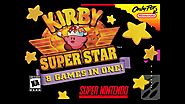
Kirby Super Star sees players take on the role of Kirby, who can float around the screen, inhale blocks and enemies and spit them out. By swallowing certain enemies after inhaling them, Kirby can copy their abilities and use them as his own, becoming able to perform a wide range of attacks. A unique feature of the game is the addition of helpers. When Kirby is in possession of an ability, he can choose to transform it into a helper character which can be controlled by a second player or the computer AI (certain abilities such as Crash or Mike cannot be turned into helpers). Kirby can choose to give the helper a different form, or revert them into a power up to use on himself in an emergency. Certain helpers, such as Wheelie, allow Kirby to interact with them during two player play. If the helper takes too much damage, there is a short time for Kirby to grant it a new power before it disappears until Kirby creates a new one. However, if Kirby takes too much damage, he will lose a life.

The story revolves around four orphaned youths drawn to a crystal of light. The crystal grants them some of its power, and instructs them to go forth and restore balance to the world. Not knowing what to make of the crystal's pronouncements, but nonetheless recognizing the importance of its words, the four inform their adoptive families of their mission and set out to explore and bring back balance to the world.
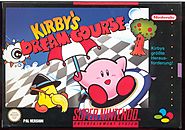
Dream Course is a golf video game which is viewed from an isometric perspective. Instead of a ball, the player tries to hit Kirby around the course and into the hole at the end.
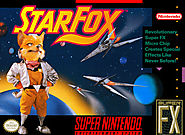
The games follow an independent mercenary unit of anthropomorphic animals called Star Fox, led by chief protagonist Fox McCloud, and their adventures around the Lylat system.
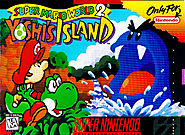
Acting as a prequel to the whole Mario franchise, the game casts players as Yoshi as he escorts Baby Mario through nearly 50 levels in order to reunite him with his brother Luigi, who had been kidnapped by Baby Bowser's minions. Yoshi runs and jumps to reach the end of the level while solving puzzles and collecting items. In a style new to the series, the game has a hand-drawn aesthetic and is the first to have Yoshi as its main character. The game introduces his signature abilities to flutter jump, produce eggs from swallowed enemies, and transform into vehicles.
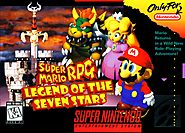
The story focuses on Mario and his party as they seek to eliminate the game's main antagonist, Smithy. Smithy has stolen the seven star pieces of Star Road where all the world's inhabitants' wishes become Wish Stars, and Mario must return the pieces so these wishes may again be granted. The game features five permanent playable characters. Super Mario RPG was directed by Yoshihiko Maekawa and Chihiro Fujioka and produced by Shigeru Miyamoto. Yoko Shimomura composed the game's score, which was released on a soundtrack album in Japan shortly after the game's debut.
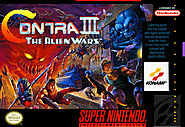
Set in the futuristic year 2636, the alien invaders that were defeated during the previous installments have decided to launch a full-scale war against mankind on Earth, starting the "Alien Wars". Unlike the previous Contra games for the NES and Game Boy, the futuristic setting was kept for the American version. However, the identities of "Bill" and "Lance", the original Contra heroes, were changed to their descendants "Jimbo" and "Sully", maintaining the continuity of the previous localizations. Likewise, the alien invader was once again changed to "Red Falcon".
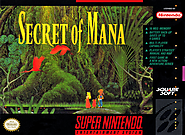
Secret of Mana features real-time battles with a power bar mechanic. The game has a unique Ring Command menu system, which pauses the action and allows the player to make decisions in the middle of battle. An innovative cooperative multiplayer system allows a second or third player to drop in and out of the game at any time. Secret of Mana was directed and designed by Koichi Ishii, programmed primarily by Nasir Gebelli, and produced by veteran Square designer Hiromichi Tanaka.

As Ness and his party of four, the player travels the world to collect melodies en route to defeating the evil alien force Giygas.
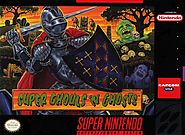
The player takes the role of the knight Arthur, who must once again rescue the Princess from the demons. The antagonist this time is the Emperor Sardius (known as Samael in the Japanese version), who has kidnapped the Princess in order to obtain the whereabouts of the Goddess's Bracelet, the only weapon capable of destroying Sardius. After making it to Sardius's castle, Arthur must return to the beginning where the Princess hid the bracelet in order to destroy Sardius permanently. After repeating his journey, Arthur defeats Sardius with the bracelet and returns the Princess to the kingdom.
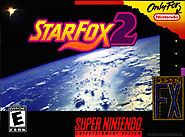
Star Fox 2's game plot continues the battle against Emperor Andross who seeks to conquer the Lylat system, with the Star Fox team assembled once again to defeat him. The game introduces a new semi-real time gameplay system, featuring new ship types and two new Star Fox team members. It also features a more advanced 3D game engine due to a new improved version of the Super FX powered GSU-2 chip.
